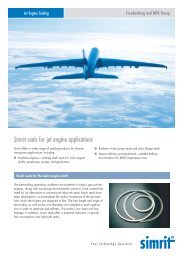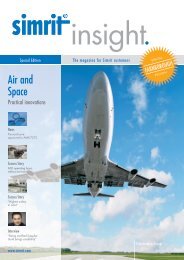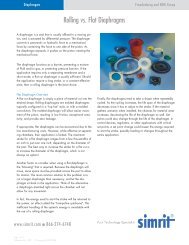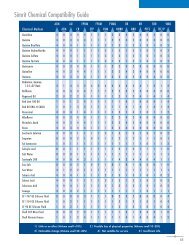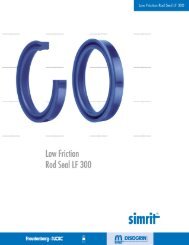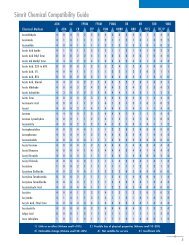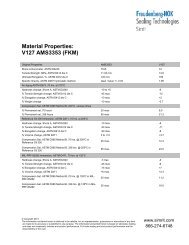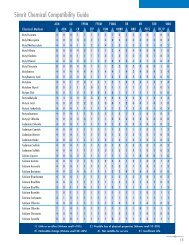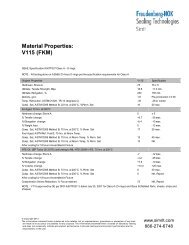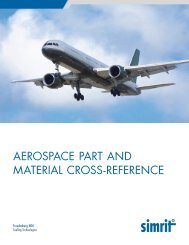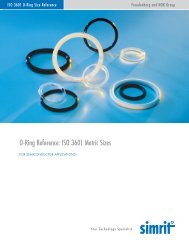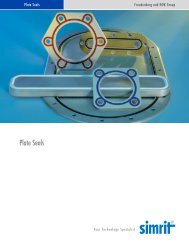Diaphragm Design Manual - Simrit
Diaphragm Design Manual - Simrit
Diaphragm Design Manual - Simrit
You also want an ePaper? Increase the reach of your titles
YUMPU automatically turns print PDFs into web optimized ePapers that Google loves.
ElastomersThe elastomer brings little strength to the diaphragm. Its primary function is to seal. Compound shouldbe chosen based on the environmental conditions, the cycle rates of the diaphragm, and the contactfluids. While making your decisions, please reference Tables 1, 2, and 4 in the Materials Section ofthe manual as well as the information provided on Thermal and Chemical Conditioning ofElastomers.General Purpose - Oil ResistantThree rubber compounds are considered general-purpose diaphragm materials -- Epichlorohydrin,Nitrile, and Neoprene. All are oil resistant and widely used in the automotive industry.Epicholorohydrin (ECO)Epicholorohydrin has an outstanding application temperature range. Its typical maximumconstant-use ceiling of 300°F is a 50° advantage over Neoprene and Nitrile. This issignificant, especially when considering automotive under-the-hood applications. The fuelresistance of Epicholorohydrin equals that of Nitrile.The low temperature properties of Epicholorohydrin allow it to have a minimum constantusetemperature of -40°F. This is unique in that the addition of plasticizers is not requiredto achieve this kind of low temperature flexibility. Therefore, thermal conditioning ofEpicholorohydrin has little effect on its flexibility.The ozone and weathering properties of Epicholorohydrin are equal to Neoprene. Thebasic mode of failure for ECO is reversion. Reversion is a softening of the material to theextent that rubber-like properties no longer exist; the material reverts back to what it wasprior to vulcanization. This happens when Epicholorohydrin is exposed to elevatedtemperatures (over 300°F) for very long periods of time.Neoprene (CR)Neoprene is similar to Nitrile in basic properties, but is not recommended for fuel relatedautomotive under hood applications. While it can be compounded for the same servicetemperatures as Nitrile, its main advantage is its natural resistance to ozone and weatherattack.Nitrile (NBR or Buna-N)Nitrile is perhaps one of the most widely used diaphragm elastomers due to its low costand its nearly universal properties. It is made of two polymers: butadiene and acrylonitrile.Adjusting the ratio of the two polymers can modify the oil resistance and low temperatureflexibility.For example, increasing the percentage of butadiene will improve the low temperatureflexing, but will lessen the oil resistance. The converse of this is true as well. Ozone andweathering resistance are weak attributes of this elastomer, but antioxidants can be addedto aid in this situation.© Copyright FNGP 200911



